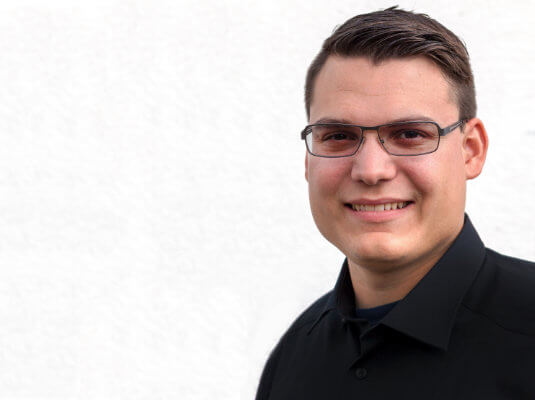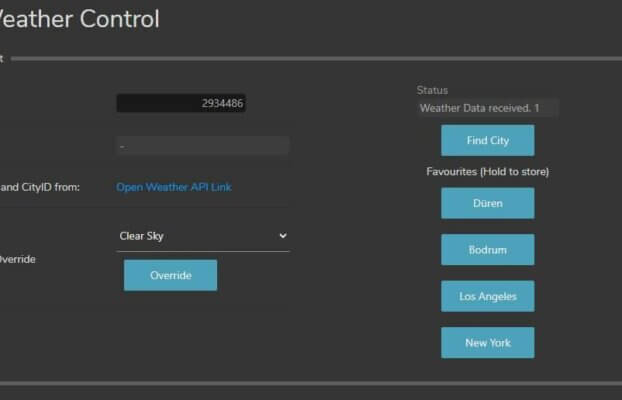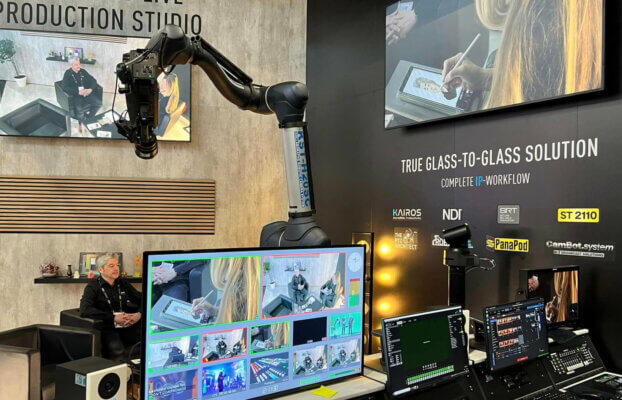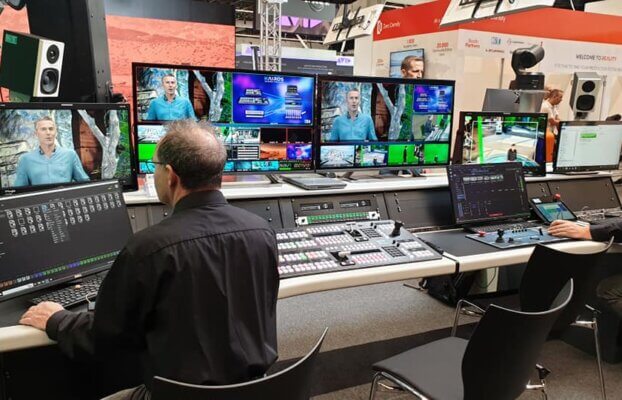network-based studio automation
CamBot®.system is the umbrella term for the comprehensive ecosystem of automation solutions for video and TV production workflows, developed by the KST-CamBot®.team Munich. The CamBot®.system ecosystem used for studio automation consists of fixed basic modules, which are necessary for operation, and of expanding individual modules, which enable different functions for the operators. These are constantly being further developed according to the state of the art and set new standards for the production workflow of tomorrow. The goal is to realize the most comprehensive automation possible for the entire TV production workflow. The focus of R&D is on making configuration as simple as possible for technicians and intuitive handling for operators.
Automation is part of the future orientation of every company, which is why KST actively works to ensure that it remains within budgetary reach for small and medium-sized projects.
Basic modules
CamBot®.control
Backbone of the complete CamBot® ecosystem is the server-based central unit CamBot®.control. The unit consists of one or more 19″ 4U servers, which control the individual modules of the CamBot®.system by redundant power supplies and optional Raid drives.
CamBot®.remote
CamBot®.remote Pro or PTZ refers to the software for controlling the automatable CamBot® systems.
The software offers a wealth of features in a clear user interface that enable deep, individual and smart intervention in the automation. In addition, different remote panel variants can be used for control.
The aim is to use automation to prepare studio productions to such an extent that, once tested, processes can be made repeatable through programming, thus significantly streamlining the studio workflow.
CamBot®.robotics
The module enables control of robotic systems that are part of the CamBot® ecosystem, such as PTZ cameras, PT heads, robotic arms, rail systems, robotic cranes, and more.
The entry-level robotic camera systems are PTZ cameras and pan-tilt heads for box or studio cameras.
More complex systems also include collaborative robot arms such as the KST-UR10 or the KST-H20, each with six movable axes. If desired, an additional floor / ceiling rail can be added for a seventh spatial axis. Other robotic systems that can be controlled with CamBot® are camera cranes and spider cams.
PTZ cameras can change the image in three directions: tilt, rotate and zoom. They thus represent the basic functions of robotic cameras. Expandable with the PTZmove.system, they can also be moved horizontally or vertically, so that they can be adjusted to the size of the presenter, for example.
Remote (Pan/Tilt) Heads are used to equip professional box or studio cameras with the functions of a PTZ camera.
Collaborative robots, also called cobots, were developed to work together with humans, for example on assembly lines, so they meet special safety criteria, such as pausing movement when adjustable pressure is applied against the robot arm. Therefore, they can work directly with humans without safety zones, making automated studio productions possible even in the smallest spaces.
Unlike cobots, high-speed and large robots cannot be used collaboratively, but they give creators more creative freedom, e.g. for advertising, tabletop and cine productions. A detailed timeline-based move editor makes special things possible here.
As an extension of the previously listed systems, additional horizontal or vertical travel planes, straight or curved, can be added using rail and lift systems, allowing a camera to be controlled on up to seven axes.
Where the reach of robots is no longer sufficient, robotic crane systems or spider cams are used.
Collaborative robots

Collaborative robots, also known as cobots, are preferred for the studios planned by KST. They were developed to work together with humans, for example on assembly lines, so they meet special safety criteria. This includes what is probably the most important function: pausing movement when adjustable pressure is applied against the robot arm. Therefore, cobots can work directly with humans without safety zones, allowing professional studio productions to be automated even in the smallest of spaces. Would you like to experience KST studio automation liver? Then simply make an appointment and visit the KST Innovation Center in Kreuzau!
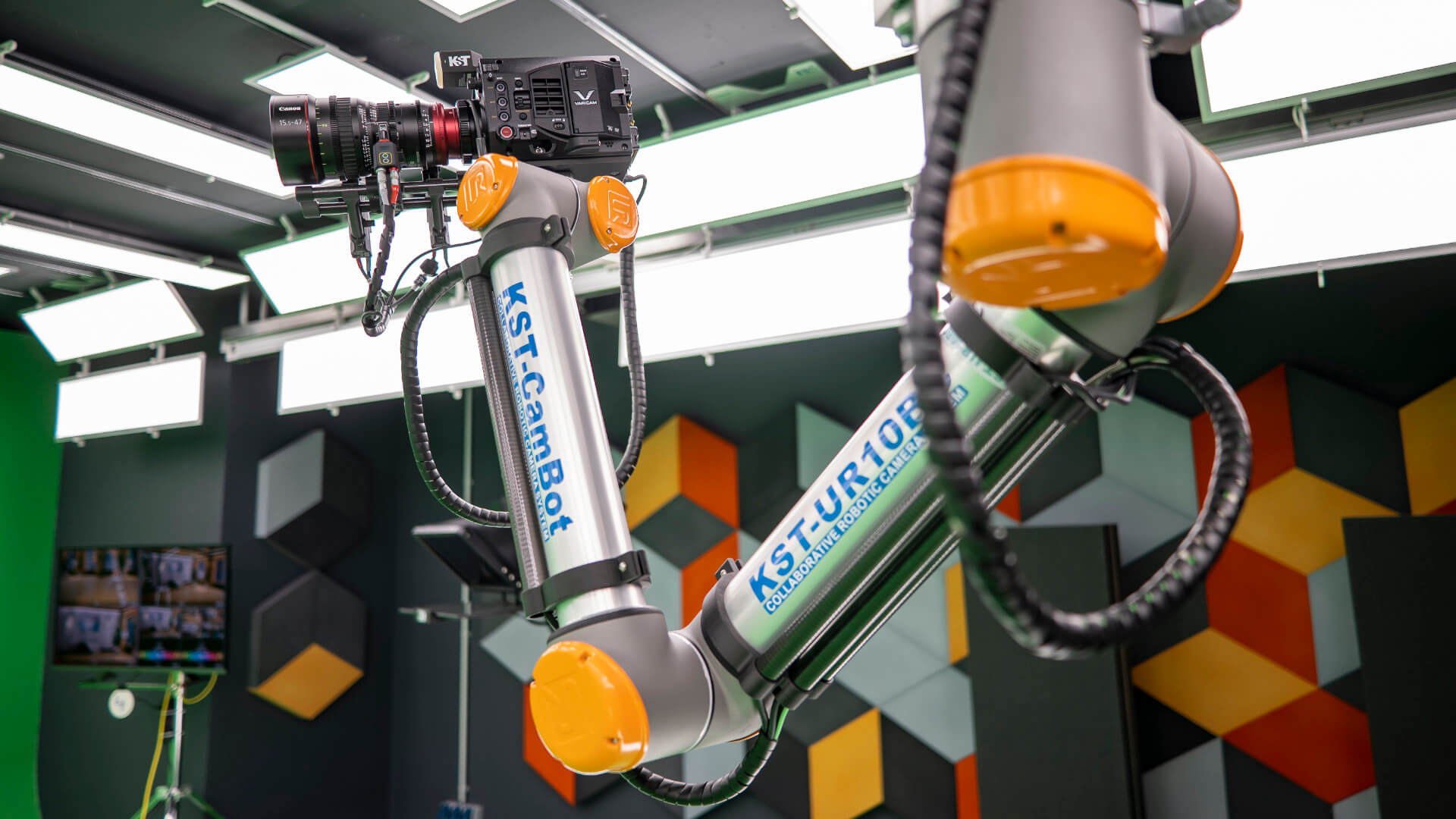
| Load capacity | 10 kg | |
| Range | 1.300 mm | |
| Dead weight | 28,9 kg | |
| Axis movement | Max. Speed | |
| Foot | ± 360° | ± 120°/s |
| Shoulder | ± 360° | ± 120°/s |
| Elbow | ± 360° | ± 180°/s |
| Wrist 1 | ± 360° | ± 180°/s |
| Wrist 2 | ± 360° | ± 180°/s |
| Wrist 3 | ± 360° | ± 180°/s |
| Features | ||
| IP-Classification | IP54 | |
| Ambient temperature range | 0-50°C | |
| Humidity | 90% RH (non condensing) | |
| Operating noise | ~ 72 dB(A) | |
| Mounting orientation | Floor, ceiling, wall | |
| Mounting column | ||
| Dimensions | ||
| Wide (incl. Feet) | 1.200 mm | |
| Height | 1.300 mm | |
| Diameter column | 220 mm | |
| Weight | 125 kg | |
| Features | rollable |
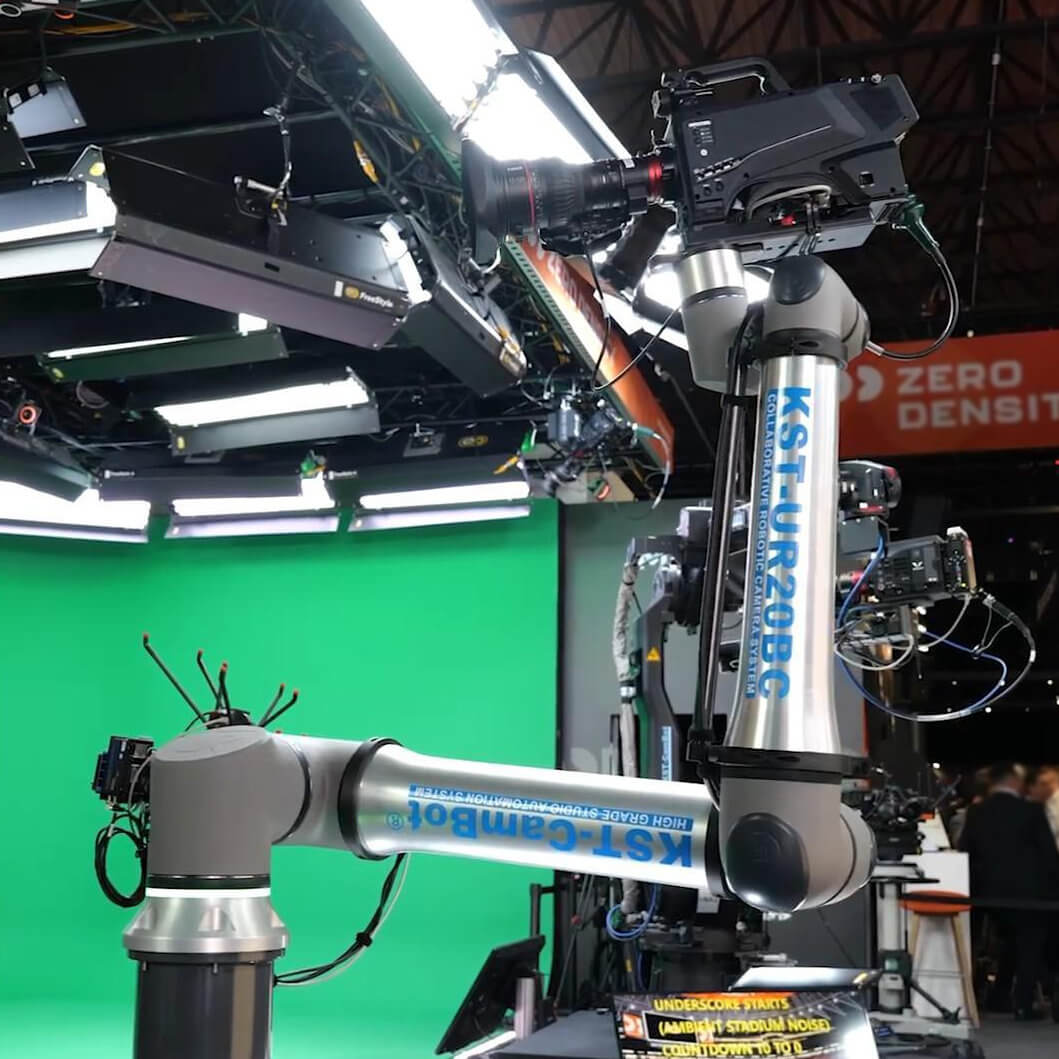
| Load capacity | 20 kg | |
| Range | 1.750 mm | |
| Dead weight incl. cable | 64 kg | |
| Axis movement | Max. Speed | |
| Foot | ± 360° | ± 120°/s |
| Shoulder | ± 360° | ± 120°/s |
| Elbow | ± 360° | ± 150°/s |
| Wrist 1 | ± 360° | ± 210°/s |
| Wrist 2 | ± 360° | ± 210°/s |
| Wrist 3 | ± 360° | ± 210°/s |
| Features | ||
| IP-Classification | IP54 | |
| Ambient temperature range | 0-50°C | |
| Humidity | 90% RH (non condensing) | |
| Operating noise | ~ 65 dB(A) | |
| Mounting orientation | Boden | |
| Mounting column | ||
| Dimensions | ||
| Wide (incl. Feet) | 1.200 mm | |
| Height | 1.300 mm | |
| Diameter column | 245 mm | |
| Weight | 125 kg | |
| Features | fixed |
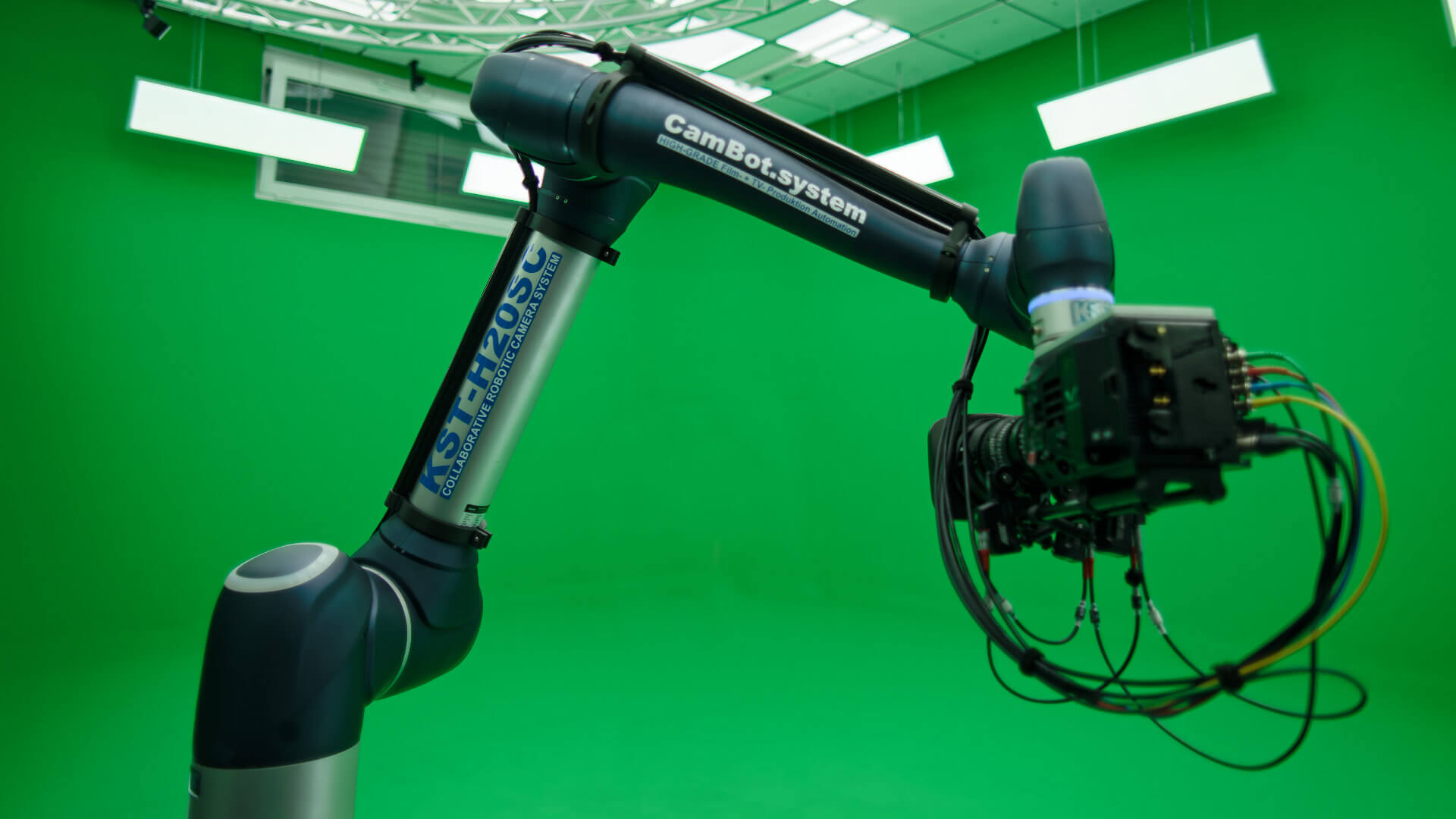
| Load capacity | 20 kg | |
| Range | 1.700 mm | |
| Dead Weight | 79 kg | |
| Axis movement | Max. Speed | |
| Foot | ± 360° | 100 °/s |
| Shoulder | ± 125° | 80 °/s |
| Ellbow | ± 160° | 100 °/s |
| Wrist 1 | ± 360° | 180 °/s |
| Wrist 2 | ± 360° | 180 °/s |
| Wrist 3 | ± 360° | 180 °/s |
| Features | ||
| IP-Classification | IP 54 | |
| Ambient temperature range | 0-45 °C | |
| Operating noise | ~ 40 dB | |
| Mounting orientation | Boden | |
| Mounting column | ||
| Dimensions | ||
| Width (incl. feet) | 1.306 mm | |
| Height | 1.300 mm | |
| Diameter column | 300 mm | |
| Weight | 125 kg | |
| Features | fixed | |
High Speed Robots
Unlike collaborative robots, high-speed robots cannot work in the same environment as humans. For this reason, they are ideal for scenic shots such as commercials.
| Load capacity | 20 kg | |
| Range | 3.124 mm | |
| Dead weight | 560 kg | |
| Axis movement | Max. Speed | |
| Foot | ±180° | 180 °/s |
| Shoulder | ±135°/-90° | 180 °/s |
| Ellbow | +206/-80° | 180 °/s |
| Wrist 1 | ±200° | 400 °/s |
| Wrist 2 | ±150° | 430 °/s |
| Wirst 3 | ±455° | 630 °/s |
| Features | ||
| IP-Classification | IP54/IP67 | |
| Ambient temperature range | 0-45 °C | |
| Humidity | 20 - 80 % | |
| Mounting orientation | Floor, ceiling, wall | |
Collision detection and avoidance
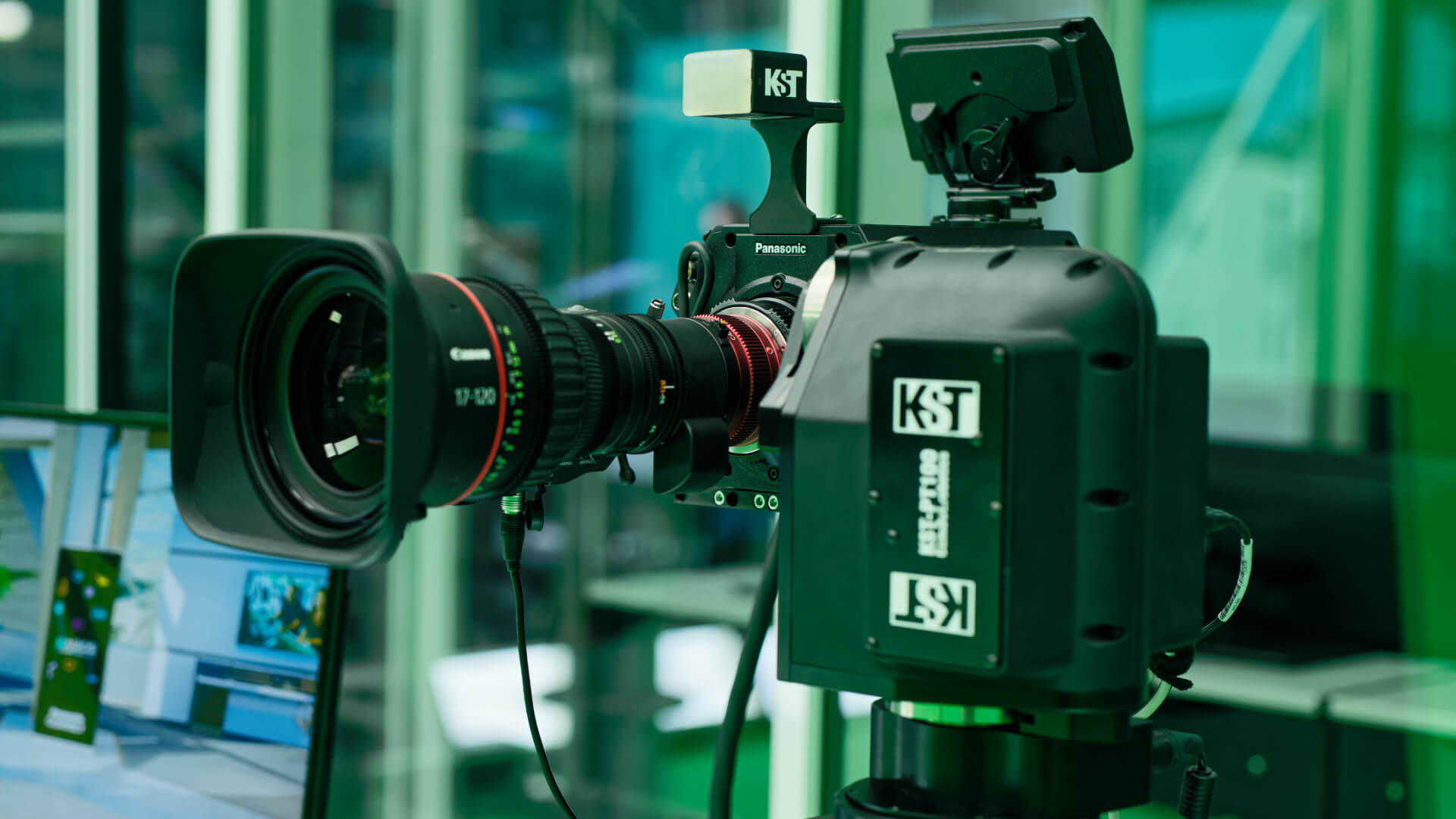
- maximum payload of 15 kg
- Own weight of 6.1 kg
- max. speed up to 100°/sec.
- 350° swivel range
- Dimensions 320 x 268 x 156 mm
- CamBot optimized
KST Weather Control Module for Zero Density’s RealityHub
21. March 2023The KST development team has recently completed the “KST Weather Control Module”. It is an interface for Zero Density’s RealityHub and can be integrated via API. The weather module automatically loads the current weather of the city selected in the...
ISE 2023 – Complete IP studio within a few days?
7. February 2023Go. KST Moschkau implemented it as a partner of Panasonic for their ISE booth in Barcelona. During the AV trade fair ISE in Barcelona, Panasonic showed the current line-up of Panasonic on this topic with a complete IP studio at...
IBC 2022 – Virtual studio production automation
8. September 2022At the Zero Density booth, KST Moschkau showed the extent to which productions in virtual studios can be automated with Reality, CamBot systems and Kairos. As a partner at the Zero Density booth, the KST CamBot team gave deep insights...
